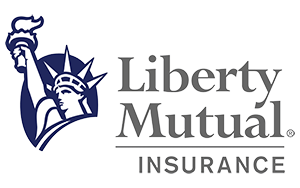Car insurance is the safety net that cushions drivers against the uncertainties of the road. But not all insurance policies are created equal. Understanding the various types of coverage available is crucial for drivers seeking comprehensive protection. In this insightful guide, we unravel the intricacies of car insurance coverage types in the USA, shedding light on the nuances of liability, collision, comprehensive, uninsured/underinsured motorist, medical payments, and personal injury protection (PIP) coverage.
Liability Coverage: Shielding Against Third-Party Claims
Liability coverage is the cornerstone of car insurance, providing financial protection against damages or injuries caused to others in an accident where you’re at fault. It typically comprises two components:
Bodily Injury Liability: Covers medical expenses, lost wages, and legal fees for the other party’s injuries.
Property Damage Liability: Pays for repairs or replacement of the other party’s vehicle or property.
Collision Coverage: Safeguarding Your Vehicle
Collision coverage steps in to cover damages to your vehicle resulting from a collision, regardless of fault. Whether you collide with another vehicle or an object like a tree or pole, collision coverage ensures your car is repaired or replaced, subject to your deductible.
Comprehensive Coverage: Beyond Collisions
Comprehensive coverage offers protection against non-collision-related incidents, including theft, vandalism, fire, natural disasters, and animal collisions. It’s the safety net that shields your vehicle from a myriad of unexpected perils, providing peace of mind on and off the road.
Uninsured/Underinsured Motorist Coverage: Preparing for the Unexpected
Despite legal requirements, not all drivers carry adequate insurance. Uninsured/underinsured motorist coverage steps in to cover your medical expenses and property damage if you’re involved in an accident with a driver who lacks sufficient insurance coverage.
Medical Payments Coverage: Covering Medical Expenses
Medical payments coverage, also known as MedPay, reimburses medical expenses for you and your passengers, regardless of fault. It’s particularly valuable for covering immediate medical costs, such as ambulance rides, hospital stays, and doctor’s visits, without waiting for liability determinations.
Personal Injury Protection (PIP): Comprehensive Medical Coverage
PIP is similar to medical payments coverage but offers broader protection. In addition to medical expenses, PIP may cover lost wages, childcare expenses, and funeral costs, providing comprehensive financial support for you and your passengers after an accident.
Choosing the Right Coverage: Tailoring Protection to Your Needs
When selecting car insurance coverage, it’s essential to assess your individual needs, driving habits, and budget. Consider factors such as your vehicle’s value, your risk tolerance, and state requirements to determine the optimal coverage types and limits for your policy.
Navigating the maze of car insurance coverage types in the USA requires a keen understanding of the protection each type offers. From shielding against third-party claims with liability coverage to safeguarding your vehicle from unexpected perils with comprehensive coverage, each type plays a vital role in ensuring you’re adequately protected on the road. By familiarizing yourself with the nuances of liability, collision, comprehensive, uninsured/underinsured motorist, medical payments, and personal injury protection (PIP) coverage, you can make informed decisions to tailor your insurance policy to your unique needs, providing peace of mind as you embark on your journeys behind the wheel














